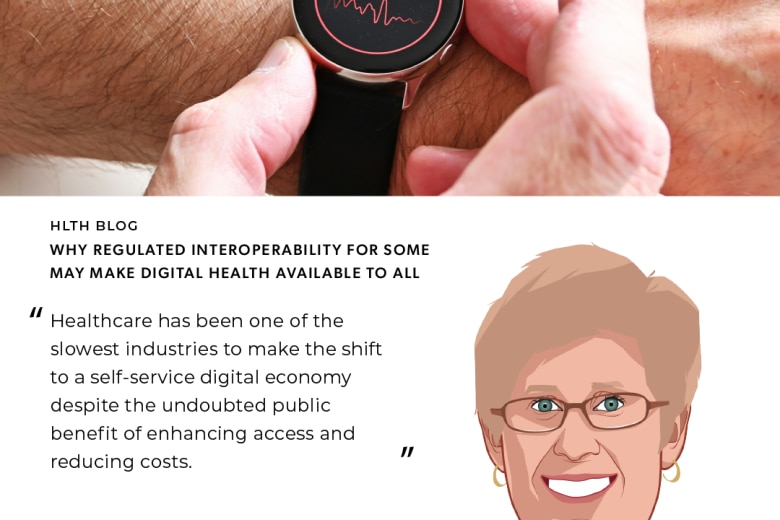Healthcare has always been an industry of technology and innovation. The list of significant advances which made a real difference is impressive: clean water, the introduction of anesthesia, the invention of the stethoscope, developing nursing into a skilled profession, germ theory, vaccinations, X-rays – the list goes on. They all matter, and they all brought about fundamental change.
But through all this change, there was a constant – the center of healthcare was the face-to-face relationship between healer and patient. Things got more complicated when we introduced hospitals, and third-party payers, and new technology, but the basic relationship stayed pretty much the same.
But now even that is starting to change. As patients are taking a more active role in their health and their decisions, demanding care when-ever and where-ever they want it, as new kinds of organizations – CVS, Amazon, Best Buy, Walmart - are providing increasing levels of healthcare, this simple core is perhaps not the real center anymore.
Today we are at a new inflection point in medical history, and it could be argued that this is a time of more pervasive disruption than almost any other. Because the forces coming together to drive change are touching on that foundational relationship. What are those forces? Economics. Consumerism. Technology.
Economics
Globally, healthcare is a $10 trillion industry, so it isn’t surprising that investors are flocking to healthcare startups and investing at a rate 5X higher than in other sectors. Existing healthcare businesses like Walgreens Boots Alliance are extending their scope horizontally and vertically, while big-box retailers like Walmart and Best Buy are investing to ensure significant future growth is healthcare-driven. Combine that with an aging population which has more and more complex chronic conditions requiring ongoing therapy. The results is a market demanding innovative, lower cost solutions that break all the norms.
Consumerism
Consumers are no longer willing to accept a health system that sets the rules for them, and entrepreneurs of all types are responding to demand by moving toward an “any-time/any-where” omnichannel healthcare experience. Testing by mail. Online scheduling. Care where you shop, work and play. Care management on your smart phone. There are 350,000 health and wellness apps on the mobile marketplaces, each offering a direct-to-consumer care management experience. Digital diagnostics and therapeutics are changing care dynamics and blending care with gaming and entertainment.
Technology
Until quite recently, most healthcare technology re-enforced the centrality of the hospital as the place of care. The tech kept getting bigger, requiring more specialization, and more in person monitoring. Now technology is working in the other direction. Consumer wearables are increasingly sophisticated continuous monitors. We have remote ICU monitoring, AI to interpret radiologic images, mental health chatbots, and hospital in the home. While we still need hospitals and human healers, increasingly, they are being extended by any-time, any-where technological carers.
At the confluence of these forces is an emerging health system that challenges many of our most cherished assumptions, that fixes a lot of what is broken, and that offers the potential to address inequities in access and outcomes.
The most popular question is ‘What does the future look like?’. I’ll let other bloggers waste their time on that one. But I rather like answering the more practical question of: ‘What is your unique role?’ It’s more important than ever, in a time of great change, to reexamine, redefine, and recommit to a strategy. Which to me has four components: What businesses do you want to be in? What segments of those do you want to serve? What is your unique value proposition for those customers? And what is your execution plan to get there? When the winds are blowing frantically around you, a solid visible strategy can keep you on the track through disruptive change and prepare you for a variety of futures.
It's truly an exciting time to be in healthcare – there is an openness to new ideas, a newly found confidence that we can drive change quickly, and a demand from our communities for a new healthcare tomorrow. Let’s get it started!







































